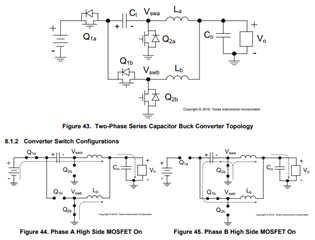Hi, TI expert.
There are 7 points that I would like to ask you to teach, such as the tolerance of the SS/FSEL comparator and the use of SCAP.
1. When running with RSS/FSEL 21.5kΩ, what is the SS/FSEL value? Should it be within 21.715-21.285kΩ which is ±1% from 21.5kΩ, or is 22kΩ acceptable?
2. How many MHz can the SYNC pin drive? Min_Ontime is 20ns, if the input voltage is 8V and the output voltage is 2V, is it possible to operate at a switching frequency of 12.5MHz and an actual operation of 25MHz?
3. Also, is it okay to open SYNC when moving with SS/FSEL?
4. VGA also has a regulator like VG+, but if a separate voltage is supplied here as well, will the efficiency be improved?
5. I apologize for asking an amateur question, but I understand that BOOTA and BOOTB have capacitors for switching operation, but what is the purpose of SCAP?
6. Why is the capacity of the capacitor connected to BOOTA, B 0.047uF?
7. Why is the capacitor attached to SCAP 2.2uF? If you only refer to the rise time, shouldn't you choose a capacitor with a smaller capacitance?
best regard.


